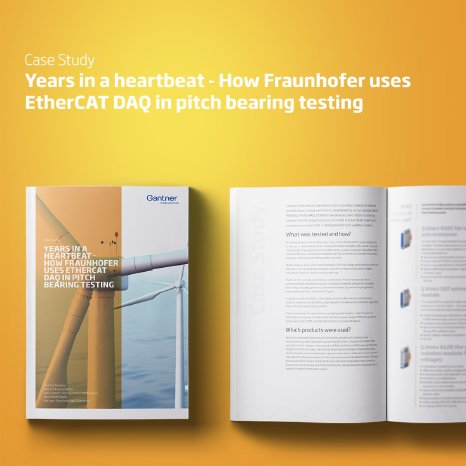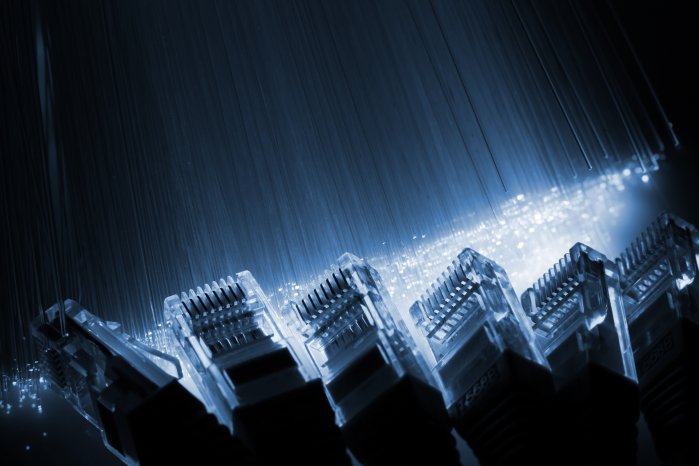What is EtherCAT?
EtherCAT (Ethernet for Control Automation Technology) is an Ethernet-based communication protocol developed specifically with industrial automation in mind. Due to its high speed, efficient data exchange and low costs of implementation, EtherCAT has now become one of the most popular networks for seamless integration between data acquisition and control systems from different manufacturers for ground vehicle, aerospace, and industrial testing applications. And here are the five most important benefits.
1. Ethernet down to the field level
The advantage of Ethernet is that every PC, notebook, or other device is equipped with an Ethernet interface. It enables high-speed data transmission over long distances using low-cost hardware. The drawback is that with standard Ethernet, the collision detection principle leads to variable data transfer rates; thus, it is not suitable for real-time, synchronized data acquisition & control applications. EtherCAT implements a master/slave architecture over standard Ethernet cabling. EtherCAT is high-speed and deterministic based on the principle of ‘on-the-fly’ processing.
Compare it to a railway where each station can offload and reload railway cars while the train passes through the station at high-speed. One EtherCAT frame holds data for many network nodes. Each EtherCAT node reads the data specifically addressed to it from the frame and inserts data into the frame while that frame passes through the node at full speed. Because frames are passed before being processed in each node, EtherCAT operates at high speed and efficiency. For test benches with many I/Os, the transmission overhead can be significantly reduced, making EtherCAT an ideal solution for multichannel, mixed signal data acquisition.
2. Mixed signal data acquisition for any testing application
Because EtherCAT was developed with industrial automation in mind, finding high-accuracy data acquisition devices that cover a wide range of sensors can be a challenging exercise. What if you need to measure temperature, pressure, and high-frequency acceleration on an engine test stand? Or measurement of voltage, current and temperature with high-voltage isolation inputs for battery charge-discharge testing? Do not worry!
Modern data acquisition system vendors like Gantner Instruments offer a full range of measurement modules with direct EtherCAT interface. There is no limitation on type of sensors that can be used with an EtherCAT-based data acquisition system: thermocouple, Pt100, LVDT, strain gage, IEPE/ICP© , piezoelectric (charge) and even fiber Bragg grating sensors. And because EtherCAT comes with oversampling technology, data sampling up to 100 kS/s (kilosamples per second) is possible.
3. Take the complexity out of distributed measurement
For years test engineers have run long analog sensor cables back to a central location in the test lab. High quality, special made, sensor cables must be used to avoid problems associated with transmitting analog signals over long distances (e.g., noise pickup and signal attenuation). With the growing number of sensors used in a test program, long analog cables become more difficult and costly to install. With a distributed measurement concept, the analog-to-digital signal conversion happens close the sensor. Via a network protocol the measurement data is efficiently transferred to the data consumer(s) for further processing or control. When designing a distributed measurement system different, less familiar aspects have to be taken into consideration, like bandwidth, connection reliability and time synchronization.
You can take the complexity out of a distributed measurement system by using pre-engineered data acquisition modules with local real-time signal processing capabilities in combination with an EtherCAT measurement bus. The analog signal is acquired close to the sensor with minimal signal distortion. Advanced signal conditioning algorithms convert the analog signal into a calibrated engineering unit value before it is distributed through the testing lab using a simple Ethernet cable.
4. Truly synchronized multichannel data acquisition
The larger the test article, the higher the number of sensors and measurement data produced. On top of that the risk of time delay and cost associated with a test program increases more than proportional with the increase in test complexity. Measurement errors due to time offset in a multichannel mixed signal data acquisition system is one of those major uncertainties during a test program. Often data acquisition devices need to be synchronized by means of FPGA programming, inaccurate network time protocols, or extra module-to-module synchronization lines. The EtherCAT solution for synchronizing devices is based on distributed clocks. The calibration of the clocks inside the devices is completely hardware-based. The resulting time error is significantly less than 1 µs, ensuring highly synchronous measurements.
5. Tight integration between data acquisition and control system
Data acquisition challenges fall into two categories: those resulting from DAQ system flexibility and those related to system integration. Limitations in DAQ system flexibility can reduce testing capacity, narrow test system architecture options, and drive up costs. On the other hand, system integration challenges often result from using data acquisition and control systems that are not explicitly designed to work together.
The option exists to buy data acquisition and control products from a single vendor. Still, since control and data acquisition are like apples and oranges, you may not get the best possible solution for your application from a single vendor. For this reason, many well-known control system vendors now offer an EtherCAT connection for specialized data acquisition products. When incorporating data acquisition and control on the same EtherCAT bus, you can be confident that every timestamp aligns, taking the uncertainty out of your test results.
Your state-of-the-art testing lab deserves the best of both worlds!
Download our free case study to read about the new large-bearing test rig at the Fraunhofer Institute of Wind Energy Systems (IWES) that was designed and installed by engineering consultancy firm IDOM using an EtherCAT-based data acquisition system from Gantner Instruments.



